Periodontal diseases - including Gingivitis, cause inflammation and destruction of the tissues surrounding and supporting the tooth. These are primarily the gums, bone, and cementum on the tooth root.
GINGIVITIS: General | Symptoms / Causes | Prevention / Treatment | Plaut-Vincent angina | Questions and Answers | Sources/references
Periodontal diseases are primarily the result of bacterial action. Still, sometimes other diseases or factors contribute to the development of the disease itself, e.g., diabetes, poor nutrition, leukemia, AIDS, and smoking.
Gingivitis
Gingivitis is inflammation of the gums (gingiva). Inflamed gums are red and swollen and bleed easily.
Gingivitis is a prevalent condition that can occur anytime after teeth eruption.
Causes and symptoms
Gingivitis is almost always the result of insufficient tooth cleaning, which leaves plaque at the edge of the gums. The plaque is soft and sticky and mainly made up of bacteria. It is usually found in the area of damaged fillings, carrier teeth, poorly cleaned partial dentures, bridges, and orthodontic appliances.
Video content: Gingivitis and inflamed gums

If plaque remains on the teeth for more than 72 hours, it hardens into tartar. Brushing and flossing alone cannot completely remove tartar. Plaques are the main cause of Gingivitis, but certain conditions, especially pregnancy, puberty, and contraceptive preparations, can also contribute to the worsening of inflammation.
Some medications cause increased gum growth, which makes plaque removal difficult, and Gingivitis often develops. Phenytoin (to prevent seizures), cyclosporine (taken by people with organ transplants), and calcium blockers, e.g., nifedipine (to control blood pressure and heart rhythm disorders), may cause excessive gum growth. Birth control pills or injections can also aggravate Gingivitis.
In simple Gingivitis, the gums are red, swollen, and receding instead of being firm, pink, and close to the teeth. They often bleed during brushing and feeding. With stronger Gingivitis, blood stains on the pillow are possible in the morning, primarily if we breathe through our mouth while sleeping.
Zaraidi vitamin deficiency can lead to Gingivitis, but this is rare today. A lack of vitamin C (scurvy) results in inflamed and bleeding gums. Niacin deficiency (pellagra) also causes inflammation and bleeding and can be the starting point for some mouth infections.
Acute herpetic gingivostomatitis is a painful viral infection of the gums and other areas of the mouth. The gums become bright red, and many small white or yellow ulcers appear in the mouth.
Video content: Acute herpetic gingivostomatitis - more about it.

Pregnancy gingivitis is mainly the result of hormonal changes during pregnancy and manifests itself as a worsening of an otherwise mild form of Gingivitis. Some pregnant women themselves are responsible for its development because they neglect oral hygiene due to poor health. During pregnancy, even a minor irritation, such as tartar, can cause tumorous growth on the gums, which is called a pregnancy tumor. Well-circulated tissue bleeds quickly when injured, and it also interferes with eating.
Desquamative Gingivitis is a painful, poorly researched condition that most commonly occurs in postmenopausal women. The outer layer of the gingiva peels away from the underlying layers and exposes the nerve endings. The gums become so sensitive that the outer layer peels off even with a light touch with a cotton swab or if the dentist blows air through a blower.
Video content: Desquamation gingivitis - more about it.

Gingivitis is the first sign of leukemia in 25 percent of children. Leukemic cells infiltrate the gums, causing Gingivitis; the situation worsens due to the organism's reduced ability to defend itself. The gum is red and bleeding slightly. The bleeding often lasts a few minutes or more because the blood in people with leukemia does not clot normally.
In pericoronitis, the gums swell. The swelling usually covers the lower, unerupted wisdom teeth. The part of the gum that covers the partially erupted tooth is a stagnant place for liquids, food, and bacteria. If the upper wisdom tooth erupts before the lower one, then the bites cause damage to the gums and infection, which can spread to the throat or cheek.
Prevention and Treatment
We can prevent common Gingivitis with good oral hygiene (daily use of a toothbrush and floss). For people who develop tartar more often, toothpaste with pyrophosphates is recommended. If tartar has already formed, a dentist can only remove it. People with poor oral hygiene, patients with diseases that lead to Gingivitis, and those with a tendency to build up plaque need more frequent professional cleanings. Depending on the rate of stone formation, cleaning is recommended every three months of the year. Because the gums are well supplied with blood, they heal again soon after the tartar and plaque are removed. Brushing and flossing can easily keep them healthy.
Video content: How can gum disease be curbed?

Diseases that can worsen Gingivitis must be treated or at least controlled. When drugs cause increased growth, the excess tissue must be surgically removed. Meticulous oral hygiene and frequent professional cleanings slow down the rate of overgrowth and also the need for surgery.
The lack of vitamin C and niacin can be eliminated by adding the missing vitamins and a balanced diet.
Acute herpetic gingivostomatitis usually resolves without medication within two weeks. Vigorous cleaning does not help, but gently brushing painful infected areas is necessary. The dentist may prescribe an anesthetic solution to rinse the mouth to make it easier to eat and drink.
If a pregnant woman finds it difficult to maintain oral hygiene due to morning sickness, the dentist can advise her on keeping her teeth and gums clean. A pregnancy tumor can be surgically removed, but it likes to recur during pregnancy.
In the case of desquamative Gingivitis during menopause, hormone replacement therapy can help. The dentist can also prescribe corticosteroid tablets or pastes, which are applied directly to the gums.
People with leukemic Gingivitis should gently massage the gums and teeth with a gauze pad or sponge instead of brushing and flossing to prevent bleeding. The dentist also prescribes mouthwash with chlorhexidine, preventing plaque formation and infections in the mouth. If the leukemia is under the doctor's control, good oral hygiene can already contribute to the health of the gums.
For people with pericoronitis, the dentist uses a solid jet to remove food and bacteria residues from under the gums. If the x-ray shows that the wisdom teeth will not be able to grow, the dentist removes the upper wisdom tooth first, then prescribes antibiotic treatment, and after a few days, he removes the lower tooth. Sometimes, he also removes the lower one right away.
Plaut-Vincent angina or ulceronecrotic gingivitis
Vincent's infection (acute ulcerative-necrotizing Gingivitis) is a painful, non-contagious infection that affects the gums and causes pain, fever, and exhaustion.
The disease is also known as trench mouth from the First World War when many soldiers were infected in the trenches. In addition to poor oral hygiene, Vincent's infection is accelerated by physical and mental stress, poor food, and lack of sleep. It occurs more often in people who already have Gingivitis and are in a stressful situation - taking exams or changing jobs. It occurs much more often in smokers than in non-smokers.
Symptoms
The disease usually begins with sudden pain in the gums, discomfort, and fatigue. Bad breath is also usually present. On the tops of the interdental papillae, ulcers are formed, covered with a gray layer of dead skin. The gums bleed immediately. Eating food and swallowing cause pain. Usually, the submandibular lymph nodes are also swollen, and a slight fever appears.
Treatment
Treatment begins with a gentle and thorough cleaning, during which the dentist removes all dead tissue and tartar. A local anesthetic may be used for this, as cleaning can be very painful. He instructs the patient to rinse his mouth several times a day with a 3% hydrogen peroxide solution (mixed with equal amounts of water) instead of brushing his teeth.
During the first 14 days, the patient must have a dental examination every day or every two days. Professional cleaning is necessary until healing. If the gums do not return to their normal state, the dentist must surgically reshape the diseased areas to prevent recurrence of the disease. Antibiotic treatment should be prescribed if a more severe form of the disease or if a dentist's intervention is not possible.
Questions and answers
How do you get rid of Gingivitis?
- improving lifestyle and home remedies,
- brushing your teeth twice a day or even better after every meal or snack,
- use a soft toothbrush and change it every three months,
- consider using an electric toothbrush, which may be better at removing plaque and tartar than a regular one,
- Dental floss,
Use mouthwash to reduce plaque between teeth[1].
Can Gingivitis heal itself?
Mild cases of Gingivitis can be treated with daily brushing and flossing, and the bleeding usually stops automatically in about a week as the inflamed gums settle down. However, if the plaque hardens (to the point of becoming tartar), the dentist must remove it before you can see a significant difference[2].
What are the first three symptoms of Gingivitis?
- Bleeding gums are one of the signs of Gingivitis.
- Bad breath is also known as halitosis, an often unpleasant condition, but it can also be a sign that gum disease is developing,
- Swollen gums - healthy gums should be firm to the touch
- Gums that change color[3].
Is Gingivitis reversible?
Gingivitis can be cured by removing tartar, which causes gum irritation. Your dentist will begin by thoroughly cleaning your teeth to remove all traces of tartar, plaque, and any bacteria that has built up in your mouth[4].
Sources and references
Extensive health manual for home use, Youth Book Publishing House
- Gingivitis- https://www.mayoclinic.org
- Gingivitis - https://www.mayoclinic.org
- What Are the Symptoms of Gingivitis? - https://www.parodontax.com
- Is Gingivitis Reversible? - https://www.myidealdental.com






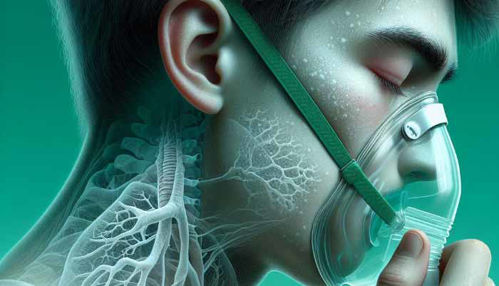
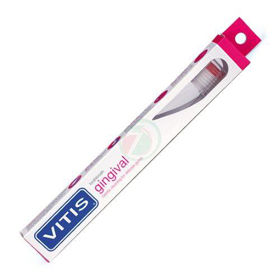
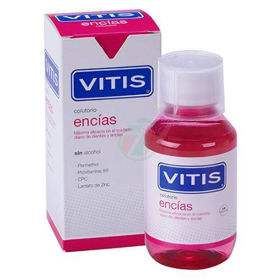
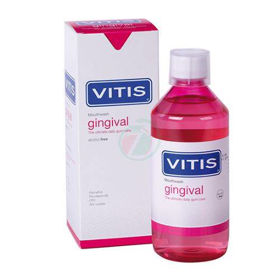
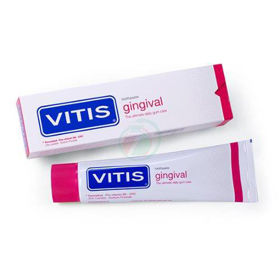

 Facebook
Facebook
 Instagram
Instagram
 info@moja-lekarna.com
info@moja-lekarna.com

